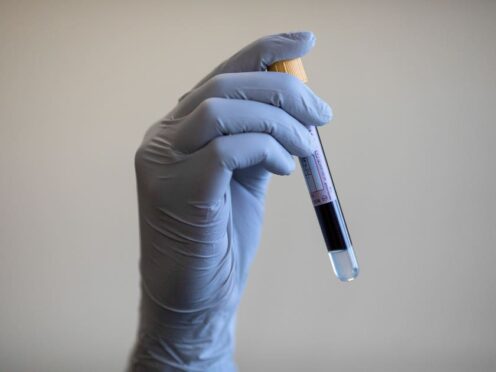
Almost half of men falsely believe they need invasive tests to check for prostate cancer, a charity has said.
A rectal exam – during which a doctor or nurse will check inside a patient’s bottom using their finger – is no longer useful, according to Prostate Cancer UK.
The charity is trying to raise awareness that a simple blood test is now used to test for the disease as part of its Find it Earlier campaign.
It comes after a survey of almost 1,000 men found 46% thought they would need a rectal exam, and this was one of the biggest factors putting them off getting tested.
Sophie Smith, senior specialist nurse at Prostate Cancer UK, said: “If you’re thinking about getting a prostate cancer test, one of the first things that comes to mind is probably a doctor putting their finger up your bum.
“We hear it everywhere, from TV shows to jokes with mates, and it’s preventing too many men from getting checked for the disease that affects one in eight of them.
“We’re finally putting an end to the misconception that getting tested for prostate cancer means you need to have a rectal exam — because, in fact, the best first test for the disease is a simple blood test that you can get for free from your GP.
“Thanks to recent advances like MRI scans being introduced and more effective therapies becoming available, the way we diagnose and treat prostate cancer is now more accurate, effective, and safe than it has ever been.”
Prostate cancer is the most common cancer in men, with more than 52,000 diagnosed each year.
The risk of developing the disease is higher in men who are black, obese, or have a family history of prostate cancer.
The NHS recommends men over 50 should ask their family doctor for a PSA test, which measures the amount of prostate-specific antigen (PSA) in the blood.
Laura Kerby, chief executive of Prostate Cancer UK, added: “Prostate cancer is the most common cancer in men, but many don’t realise that they’re at risk of getting the disease.
“This, combined with long-standing myths and misconceptions about prostate cancer testing, means that too many lives are being cut short.
“The good news is that the earlier you find prostate cancer, the easier it is to treat — and an earlier diagnosis could save your life.
“That means more summers setting off with your family on holiday, more dad-dancing at your daughter’s wedding, and more nail-biting seasons watching your team inch up the league table. So, the best time to do something about prostate cancer is right now.”
The survey also found that just one in five men were aware that prostate cancer tests are not part of routine health checks.
There is currently no screening programme for prostate cancer and GPs do not contact men who are deemed higher risk to tell them to get checked.
Seven in 10 men also admitted they would wait until symptoms were really bad before going to the GP.
Tim Scane, 66, from Didcot in Oxfordshire, was diagnosed early with prostate cancer after seeing an advert for Prostate Cancer UK’s Risk Checker on social media.
The keen cyclist felt healthy other than getting up more in the night to use the toilet.
“One day I was scrolling through Facebook and an advert came up from Prostate Cancer UK encouraging men to take their Risk Checker tool,” Mr Scane said.
“I clicked through and completed it, and that prompted me to make an appointment with the GP. I’m so glad I did, because after an initial blood test I was referred for scans in hospital which showed I actually had prostate cancer.
“It was a tough time, but I had great support from my family and the doctors and nurses.
“They found it early, fortunately, so the cancer hadn’t spread and was able to have it removed surgically. Now I’m recovered and totally well. Seeing that advert online is why I’m cancer-free today, so I’m glad to be part of this campaign getting more men to check their risk like I did.”
In May, Prostate Cancer UK launched the £42 million Transform trial, which will compare various screening methods to current NHS diagnostic processes – which can include blood tests, physical examinations and biopsies.
According to the charity, previous trials that used PSA tests and biopsies to screen for prostate cancer showed the method prevented between 8% and 20% of deaths, depending on screening regularity.
However, Transform has the potential to reduce deaths from prostate cancer by 40%, Prostate Cancer UK said.

Enjoy the convenience of having The Sunday Post delivered as a digital ePaper straight to your smartphone, tablet or computer.
Subscribe for only £5.49 a month and enjoy all the benefits of the printed paper as a digital replica.
Subscribe